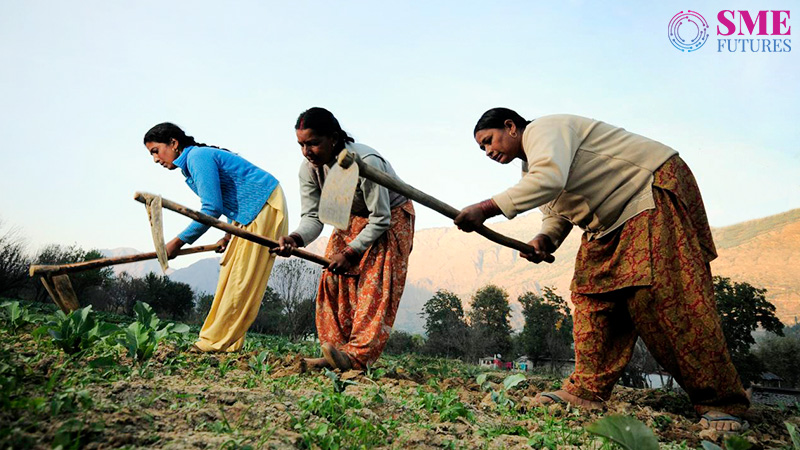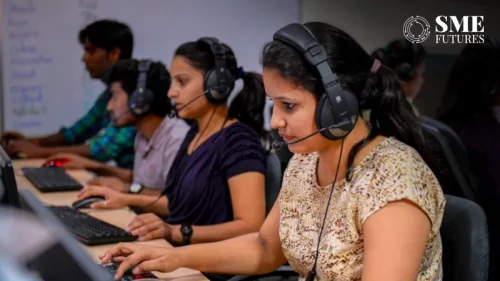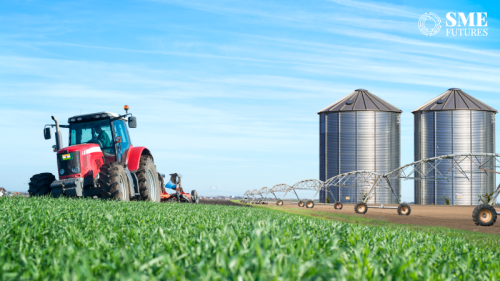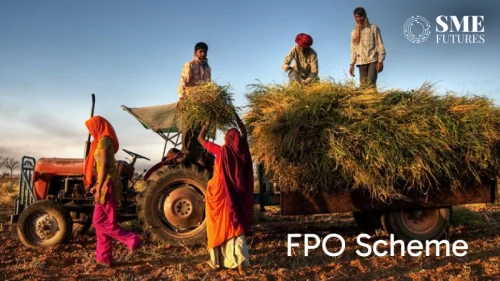If you are visiting a village during the sowing season, hunching women planting seedlings is one of the most common sights. But thinking of a farmer always brings to our mind the image of a man. Probably that is why we often fail to see the plight of the women working in the fields. Despite being one of the biggest contributors to the gross domestic product (GDP), agriculture is still an unorganised sector and women working in the sector are the biggest casualty. They bear the twin responsibility of performing well both in and off the field, much like any other women professional in India. But unlike her, women working in the fields never get their dues – the International Labour Organization (ILO) indicates that 41 per cent of the world’s agricultural labour force, which rises to 49 per cent for low-income countries,1 and yet these women find a mention in discussion papers or strategy documents.
Status of Women Farmers in India
It will startle many to know that as much as 80 per cent food produced is done by women working in the agriculture sector. While they are present at all levels of the value chain – pre-harvest, production, post-harvest, processing, packaging, and marketing – labour-intensive sowing, transplanting, and weeding are heavily dependent on them. The Economic Survey 2017-18, interestingly, pointed at the ‘feminisation’ of the agriculture sector, noting that with growing rural to urban migration by men, an increasing number of women are assuming multiple roles as cultivators, entrepreneurs, and labourers.2 According to the 2017-18 data published by the National Sample Survey Office (NNSO), over 70 per cent of rural women workers are engaged in agricultural work.3 Women comprise 33 per cent of the agriculture labour force and 48 per cent of the self-employed farmers. However, the agricultural census of 2015-16 finds that only 13.9 per cent women are owners of landholdings. Bihar is probably the biggest example of this dichotomy where 50.1 per cent of the total farming workforce comprise women but only 7 per cent women have land rights.4 Despite carrying out as much as 75 per cent of all farming related work across most regions of India, their wages are 1.4 times less than the men counterparts. More alarmingly, the work participation rate of rural women between 15 and 59 years was 51.6 per cent in 1993-94 but declined to 37.2 per cent in 2011-12, according to the NSSO data on periodic labour force. The Census 2001 shows that out of the total number of agricultural workers, women and men comprised 39 per cent and 61 per cent, respectively; by the next Census, 37 per cent were women and 63 per cent were men. The rate of labour dropout is higher for women in agriculture – between 2004-05 and 2011-12, 27 million female workers left agriculture, and only 5 million of them joined non-farm sectors; the rest simply withdrew from the labour force. However, the entire 6 million male workers who left agriculture during this period joined non-farm sectors.
Bringing Gender Parity to Agriculture May Open New Dimensions
In most of the cases, women working in the agriculture sector bear responsibility without power, mainly because men are in charge. They are the first casualty in cases of job loss and lie at the receiving end in cases of domestic discord. The prevalent gender-based discrimination and social norms ensure that most of their work remain unseen, unrecognised, and undervalued. They are at a high risk of sexual harassment and other forms of gender-based violence, both on and off the field. Amid all this we miss noticing the qualities that may make women a more preferred workforce in agriculture.
Why would women make better farmers?
Firstly, they are the more rooted human beings than men in the society. Due to income distress and other cascading factors impacting agriculture, many farmers are migrating to the cities for better income, with rarely a chance to come back. They leave their families, comprising women and children, behind in the villages. Owing to societal norms, women are less likely to migrate to cities and hence, are available for the field-based work. Secondly, and probably the more vital point is, as many studies have suggested, women have better emotional intelligence, a quality that makes one aware of, control, and express one’s emotions, and to handle interpersonal relationships judiciously and empathetically. Hence, if women oversee farming, we may expect prudent and informed decisions will cohabit with the financial considerations – a fact that will certainly consolidate farming is a community activity and facilitate our goal of achieving food security.
Creating an Enabling Environment is the First Step
Acknowledging the status of ‘women farmers’ will bring agriculture at par with employment means that encourage equal opportunity, for such a status will only reinforce a human right enshrined in our constitution and international labour standards, which promotes gender equality as a means to women’s economic empowerment.
The first and most important step in achieving the goal is allowing girls unhindered access to secondary education. This will ensure that the girls receive basic education that they will need to fall back on in future – education enables them to inculcate better decision-making ability and understand available information in a comprehensive manner. Education will also address their apprehensions about the latest technology such as digital data and smartphones. Over the years, Indian agriculture is on a rapid digitisation spree while most of the women in rural areas hardly own a smartphone.
Once ready for the market, these women will need proper infrastructure and access for formal financing to start with the work. A robust infrastructure and smooth financing options may foster women entrepreneurs from the rural areas who will, eventually, have the unique opportunity to voice their concerns. In time, they may well become the flag bearer of ideas that will protect rural women from unacceptable forms of work, enhance their social protection, and close the gap in representation by ensuring their voices are heard.











